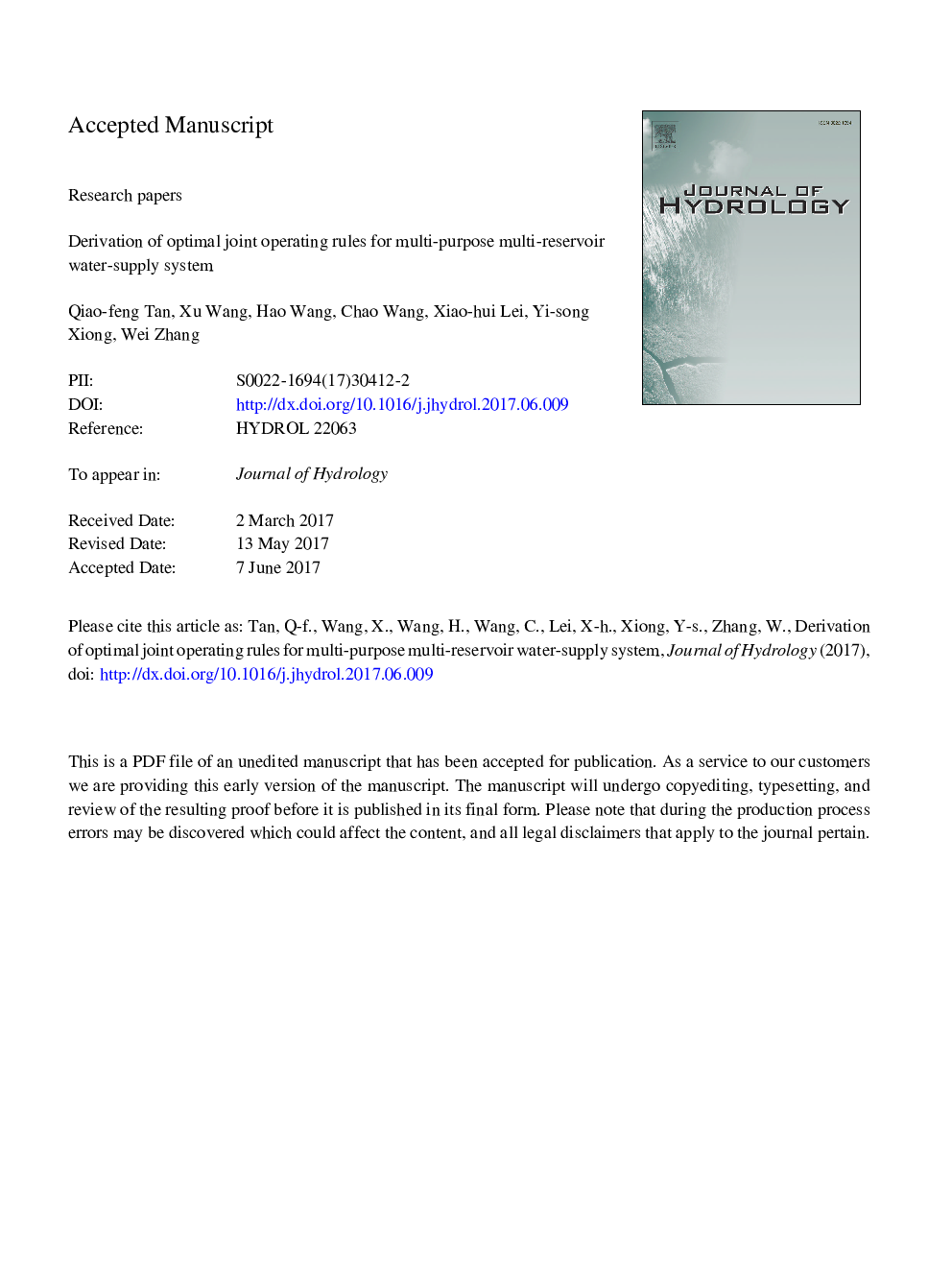| Article ID | Journal | Published Year | Pages | File Type |
|---|---|---|---|---|
| 5770900 | Journal of Hydrology | 2017 | 27 Pages |
Abstract
The derivation of joint operating policy is a challenging task for a multi-purpose multi-reservoir system. This study proposed an aggregation-decomposition model to guide the joint operation of multi-purpose multi-reservoir system, including: (1) an aggregated model based on the improved hedging rule to ensure the long-term water-supply operating benefit; (2) a decomposed model to allocate the limited release to individual reservoirs for the purpose of maximizing the total profit of the facing period; and (3) a double-layer simulation-based optimization model to obtain the optimal time-varying hedging rules using the non-dominated sorting genetic algorithm II, whose objectives were to minimize maximum water deficit and maximize water supply reliability. The water-supply system of Li River in Guangxi Province, China, was selected for the case study. The results show that the operating policy proposed in this study is better than conventional operating rules and aggregated standard operating policy for both water supply and hydropower generation due to the use of hedging mechanism and effective coordination among multiple objectives.
Keywords
Related Topics
Physical Sciences and Engineering
Earth and Planetary Sciences
Earth-Surface Processes
Authors
Qiao-feng Tan, Xu Wang, Hao Wang, Chao Wang, Xiao-hui Lei, Yi-song Xiong, Wei Zhang,
